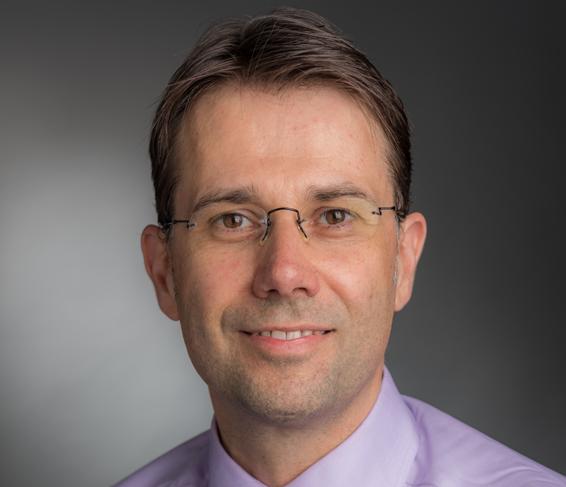Tracking how multiple myeloma evolves by sequencing DNA in the blood
Although people with multiple myeloma usually respond well to treatment, the blood cancer generally keeps coming back. Following genetic changes in how the disease evolves over time will help to understand the disease and, eventually, deliver more effective treatments. Researchers now have successfully demonstrated techniques to track these alterations over time by analyzing cell-free DNA (cfDNA) found in blood, according to Jens Lohr, MD, PhD, a hematologist and oncologist at Dana-Farber Cancer Institute.
Traditionally, multiple myeloma progress is monitored by painful and invasive bone marrow biopsies, but those biopsies are impractical to perform repeatedly, said Lohr, who presented study results at the 59th American Society of Hematology (ASH) Annual Meeting and Exposition in Atlanta.
"We asked if you could get equivalent genetic information by monitoring cell-free DNA," he said. "The short answer is yes, in principle, all this information actually is in the blood."
The scientists began by performing whole genome sequencing of 110 blood samples from 75 randomly selected multiple myeloma patients for cfDNA, and used the resulting data to predict the utility of deeper whole exome sequencing of the cfDNA. They also obtained cfDNA, matched normal blood cells, and bone marrow myeloma cells from 10 myeloma patients at the same time point, and demonstrated that cfDNA whole exome sequencing robustly identified genetic mutations and these mutations matched up well with those found in sequencing bone marrow cells. The vast majority of clonal mutations and copy number variations in the bone marrow were also identified in cfDNA.
"We know that myeloma changes all the time, as evidenced by the constant relapses among patients," Lohr said. "When we follow the patient in realtime, we clearly see in the blood how the genetics actually changes when the patient relapses. That means that we get very good information about the changes that happen every time drug resistance develops, which is something that is simply not practical with bone marrow biopsies."
cfDNA sequencing potentially can provide results that are more representative of myeloma throughout the body than bone marrow biopsies, which essentially represent one needle site. cfDNA analyses also should prove easier to standardize, since "it’s very hard to mess up a blood biopsy" whereas bone marrow samples may be inconsistent, he said. Additionally, blood samples can be easily preserved and shipped for genetic tests. On the downside, however, unlike myeloma cells from bone marrow biopsies, cfDNA cannot be enriched for myeloma-specific cfDNA. Therefore, discovery-oriented whole genome and whole exome sequencing currently are only cost-effective for active myeloma. Lohr predicts that investigations of cfDNA will be complementary with those with another form of liquid biopsy, which examines circulating tumor cells (CTCs).
"The advantage of cfDNA is that it's extremely robust, you can automate it and scale it very well, and in the near future it will be relatively easy to implement in the clinic," he said.
CTCs, in turn, allow other cell components to be analyzed in addition to DNA, such as RNA, proteins, and myeloma cell structure.
"We think both kinds of liquid biopsies add value and should be used together in clinical trials in the very near future, to try to make predictions about how drug resistance develops," he said.
Lohr cautions, however, that more research needs to be done for sequencing data from any form of myeloma biopsy to significantly aid oncologists in providing today’s clinical care. One limitation is that although molecularly targeted drugs for specific genetic aberrances are in clinical trials for the disease, none is yet approved by the Food & Drug Administration.
Lead funding for the research was provided by the National Cancer Institute and the American Society of Hematology. Other Dana-Farber contributors included Guangwu Guo, PhD, Charles Seifer; Jake Kloeber; Randi Isenhart; Yu-Tzu Tai, PhD; Jordan Voisine; Julia Frede, PhD; Antonis Kokkalis, PhD; Huiyoung Yun, PhD: Valeriya Dimitrova, PhD; Matthew Meyerson, MD, PhD; Nikhil Munshi, MD; Kenneth Anderson, MD; and Birgit Knoechel, MD, PhD. Additional contributors included Gavin Ha, PhD, of the Broad Institute of MIT and Harvard; and Noopur Raje, MD; Andrew Yee, MD; Elizabeth O'Donnell, MD; and Erica Gemme of Massachusetts General Hospital.
Media Contacts
If you are a journalist and have a question about this story, please call 617-632-4090 and ask to speak to a member of the media team, or email media@dfci.harvard.edu.
The Media Team cannot respond to patient inquiries. For more information, please see Contact Us.
